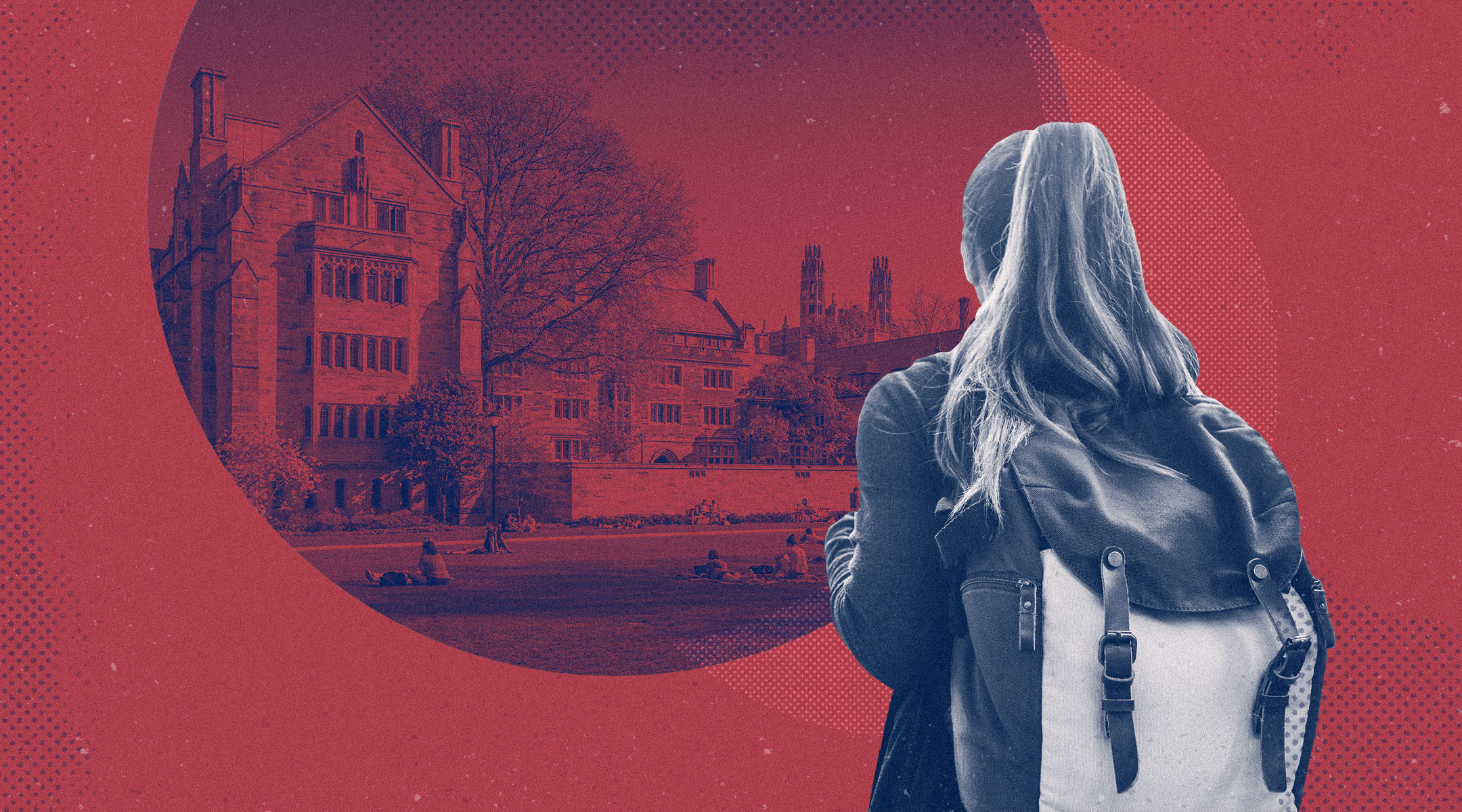I call on myself and my fellow higher-ed marketers to have the courage to drop the sameness. Let’s push back when we’re asked to run the 16-photo collage on the cover of the viewbook. Let’s find out what our institutions are really all about and market the hell out of that.
The aerial shot of campus, gauzy and stunning in early-evening sunlight. The multiracial student group laughing their way across the quad. The ponytailed young woman peering pensively into a microscope. The learned faculty member caught in mid-lecture — usually with a hand gesture of some kind — at the front of the classroom. The running back stiff-arming a defender and the field hockey player stickhandling the ball down the field, the photos side by side, always side by side, because heaven forbid we include only one gender among our student athletes.
And those are just the images. The messaging is just as formulaic. Student-faculty ratios. Rankings, no matter how obscure or esoteric, because every single college and university in the United States has been ranked on someone’s list. The number of intercollegiate athletics programs. The distance to the nearest major city. And on and on and on.
From there, my daughter and I took our search online. As happened with the print pieces, approaching college websites with a different perspective proved eye-opening. You know that Venn diagram that gets shown at almost every marketing conference we go to? The one labeled “THINGS ON THE FRONT PAGE OF A UNIVERSITY WEBSITE” AND “THINGS PEOPLE GO TO THE SITE LOOKING FOR”? It is shockingly, agonizingly true. If, for example, the name of your school doesn’t convey where you are or what you’re near — “campus address” being one of the items in the “what people are looking for” circle — don’t make prospective students scroll all the way to the bottom of the page to search out your address in 8-point type. Your location is one of the very few things only your institution can claim. So claim it. Geographic considerations were near the top of my daughter’s list of criteria, and she was frustrated at how difficult it was to find something as simple as a college’s whereabouts.
Likewise, it’s time to be upfront about cost. The spelunking I had to do to find something as fundamental as tuition and fees was considerable, and I’m someone who knows his way around these websites. Imagine how difficult it is for those who don’t do our work. Imagine how impossible it is for first-generation college families.
The most illuminating experiences were the campus visits and tours, for that is when the sameness finally began to slip away. It was fascinating to see and hear first-hand what schools chose to emphasize during these most critical of touchpoints. At a small, elite, liberal-arts institution we toured, sustainability was noted as a core value. At a mid-sized urban school, we heard lots of talk about the freshman cohort program that was developed to increase retention. Neither of these (or any of the other differentiation points we heard) was earth-shattering. But rather than talking about everything, these colleges had their reps focus on the things they think they’re very good at.
Our colleagues in admissions are paid to put bodies in seats. If they’re not the right bodies, well, that’s for academic affairs to figure out — they’re the ones usually responsible for retention. Admissions is on to the next class.
We marketers are the ones with the obligation to make sure as much as we can that the young women and men who show up on move-in day know what they’re here for. Promoting a product — an experience, really — that we have little chance of providing is a great way to get our freshmen to look elsewhere for what they want, need, and expect. We cannot be all things to all students, and to pretend otherwise is both bad business and ethically dubious.
So I call on myself and my fellow higher-ed marketers to have the courage to drop the sameness. Let’s push back when we’re asked to run the 16-photo collage on the cover of the viewbook. Let’s find out what our institutions are really all about and market the hell out of that.
And, as always, know your audience and deliver content accordingly. Our friends in development may want us to mention philanthropy at every. possible. turn., but a teenager who has only ever held hourly jobs is not going to be impressed by your wall of donors, your alumni giving rate, or the gift that an alumnus made to endow the dessert kiosk in the dining hall. (No, really.)
Where’s the data? you ask. I don’t have any; I fully concede that this viewpoint is based on a sample size of one.
But take a look at your campus and your work with the eyes of a 17-year-old, or those of her parents.
Are you seeing anything truly compelling? Anything that you can claim as yours and yours alone? Or just the same stuff that comes out of your peer and competitor institutions?
Better yet, sit down with my daughter and ask her.







